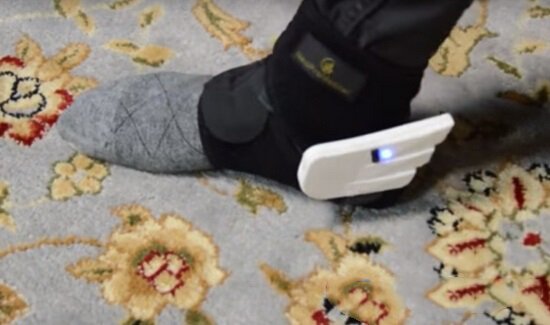Since VR began to spread in the consumer market, how to solve the synchronization between the two "realities" has become the primary issue affecting the player's experience. Among them, the design of mobile methods seems to be an enduring topic in the developer community. In response to this pain point, Talaria recently designed Talaria VR, a foot tracking device similar to "Wings Shoes," and hopes to solve the problem of long distance movement in VR.

This foot tracking device consists of an elastic strap wrapped around the ankle and connected "wings." The elastic band design can adapt to different users' wearing requirements. Users can even track this device on other body parts, such as arms, elbows and so on. In addition, the device can be used in a variety of situations. When using the device, the user can either adopt a sitting position or a standing position, and the space requirement is more flexible. The user's movement data can be transmitted to the computing center through this wirelessly-connected device, which is similar to the principle of using the VR handle. Therefore, there is no need to install additional drivers or SDK, plug and play.
In order to achieve the most comfortable use experience, this device incorporates a directional tracking system in the precise decoupling motion and incorporates a pressure sensing system in the feedback system. In addition, the device's multi-stage input design and dynamic movement speed enable The mobile experience is more real. According to personal habits and preferences, users can adjust relevant parameters in real time through the control panel included in the device to set a personalized mobile experience. The device can support various movements such as walking, running, jumping, squatting, and the like, and can also switch between the first-person and third-person views. In addition, the user can leave walking footprints in the VR environment, and each step of the walk, according to the size of the user's pedaling effort, the system will issue feedback sound effects of different sizes.
In fact, the experience of users using Talaria VR may be similar to that of RIPmotion - the player only needs to make a position to run in order to realize the displacement. However, compared with RIPmotion, Talaria VR is significantly superior in experience - users do not need to sacrifice hand interaction to "exchange for" space movement, so while moving in VR large space, users can simultaneously perform other interactive activities such as running. Shooting at the end of the squatting and so on are closer to the real environment experience. And compared to "telemotion", this more realistic movement can greatly reduce the occurrence of motion sickness. In addition, compared to a universal treadmill that is more suitable for the B-side market, the purchase of such a "lightweight" device is obviously more suitable for consumers' tastes.
There is no news at the moment when Talaria VR intends to introduce this product to the market. In the demo video released, they explained that this product is still just a prototype. The final product may have some changes, and hopes to have more interest. Developers can contact them via email to improve this device.